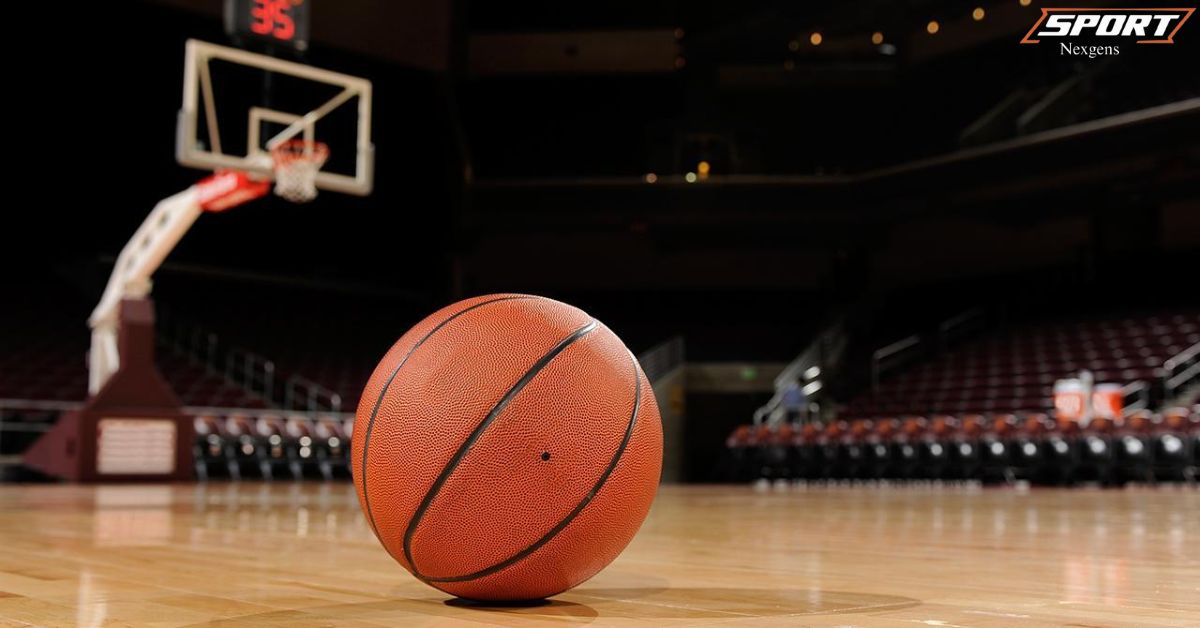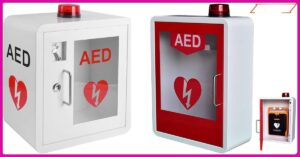Basketball games are like elastic bands of time. While the clock shows 48 minutes for NBA games, the real-world experience often stretches past two hours.
This extra time comes from a mix of strategy pauses, dramatic moments, and modern tech reviews. It’s not just about the action on the court – it’s a full-blown show with analysis breaks and commercial timeouts.
The duration of a this game isn’t one-size-fits-all. College matches usually wrap up in about two hours, while high school games finish a bit quicker. International contests like FIBA games have their own unique rhythm.
Duration of a Regulation NBA Basketball Game
An NBA game’s clock may say 48 minutes, but the real show often lasts over two hours. The game is divided into four 12-minute quarters, with a halftime break in between. However, the action on the court is just part of the story.
Timeouts, fouls, and replay reviews all add to the game’s duration.These stoppages aren’t just delays – they’re part of the NBA experience. Coaches use timeouts to strategize, while replay reviews ensure crucial calls are correct.
Free throws after fouls add drama and give players a breather. All these elements combine to transform a 48-minute game into a multi-hour sporting event that keeps fans glued to their seats.
Basketball Timeouts
Timeouts in basketball are like pressing pause on the action. Each NBA team gets six timeouts per game, lasting about 100 seconds each. Coaches use these breaks to draw up plays, make substitutions, or give their players a breather. But for TV viewers, timeouts often mean it’s time for commercials.
These strategic pauses can seriously stretch out a game’s length. With both teams using their full timeout allotment, that’s an extra 20 minutes added to the clock. Timeouts are more than just breaks – they’re tactical tools that can change the game’s momentum.
Read This Blog; Katy O’Brian Gender, Spouse, and Biography
Basketball Fouls and Free Throws
Fouls and free throws are like mini-dramas within the larger this game. When a player is fouled while shooting, they get free throws – unguarded shots from the free-throw line. These moments can be high-pressure, especially in close games.
These seemingly small interruptions add up quickly. Over 85% of NBA games feature at least 43 trips to the free-throw line. That’s a lot of clock-stopping action! Free throws not only extend the game’s duration but can also shift momentum..
Basketball Halftime Break
Halftime in basketball is like a mini-intermission in a play. It lasts 15 minutes in the NBA, giving players a chance to rest and regroup. Coaches use this time to adjust strategies and motivate their teams. For fans at home, halftime often means highlight reels and expert analysis.
But the halftime clock doesn’t always stick to 15 minutes. TV broadcasts frequently extend this break, sometimes pushing it closer to 20-25 minutes. This extra time allows for more in-depth commentary and, of course, more commercials.
Basketball Quarter Breaks
Quarter breaks in basketball are like quick pit stops in a race. They last about two minutes in the NBA, giving players a brief rest. Coaches use this time for quick strategy chats and to make substitutions. For fans, these breaks often mean a flurry of stats and replays on the screen.
But in televised games, quarter breaks can stretch longer. TV networks use this time for commercial breaks, sometimes extending the pause to three or four minutes. These longer breaks give players more recovery time, which can impact their performance.
Basketball Replay Reviews and Challenges
Replay reviews in basketball are like instant rewind buttons for referees. They use video technology to double-check close calls, especially in the final two minutes of each half. These reviews can last anywhere from a few seconds to several minutes.
These high-tech pauses add a new layer to this timing. While they ensure more accurate officiating, they also extend the game’s duration. Fans often use these breaks to debate the call or grab refreshments. the game’s outcome with a single.
NBA Playoff and Championship Game Duration
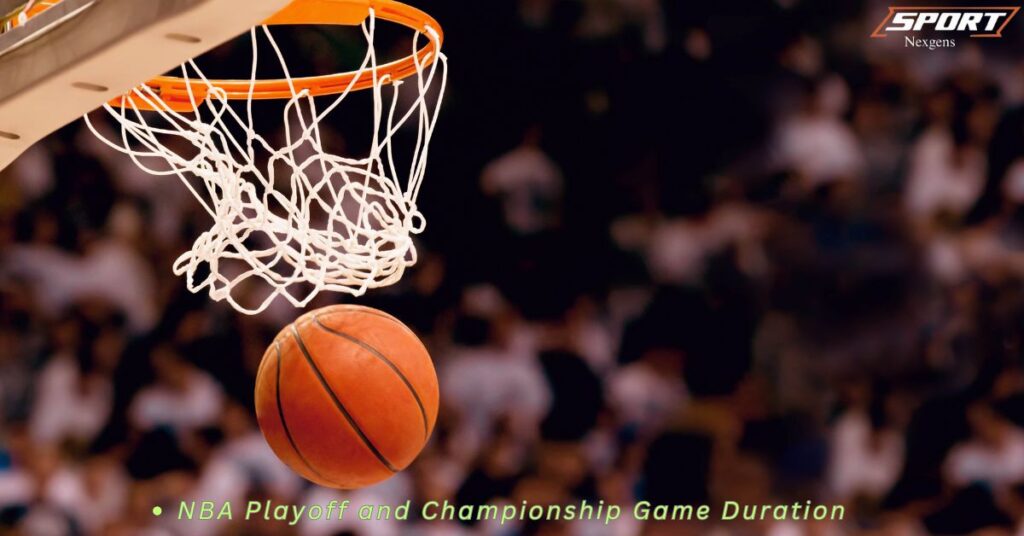
NBA playoff games are like extended editions of regular season matches. These high-stakes contests often run longer, typically lasting between 2 hours 30 minutes to 2 hours 45 minutes.
Championship games take this to another level. The pressure of the finals can lead to even more strategic pauses and reviews. TV broadcasts also tend to extend breaks for more analysis and commercials.
College, High School and Youth Basketball Game Length
College basketball games are like compact versions of NBA matches. They typically last about 2 hours 15 minutes, with four 10-minute quarters. High school games are even shorter, usually running between 1 hour 45 minutes to 2 hours.
NCAA College Basketball
NCAA college this games are like fast-paced mini-marathons. They feature four 10-minute quarters, totaling 40 minutes of play. However, the actual game duration typically stretches to about 2 hours and 15 minutes.
College games have their own unique rhythm. They use a 35-second shot clock, giving teams more time to set up plays than in the NBA. Championship games and major conference matchups often run even longer, sometimes exceeding 2.5 hours.
Read This Blog; Dionna Kann Granger: Meet Danny Granger’s Wife
State High School Basketball
High school these games are like quick sprints compared to their college and pro counterparts. They typically consist of four 8-minute quarters, totaling 32 minutes of play. Most high school games wrap up in about 1 hour and 45 minutes to 2 hours.
These shorter games have their own unique flavor. With a 30-second shot clock and more frequent substitutions, the pace can be surprisingly fast. Unlike pro games, high school matches rarely have national TV coverage, which means fewer commercial breaks and a more streamlined experience for fans in the bleachers.
Youth and Recreational Basketball
Youth this programs are evolving, with a growing emphasis on skill development over competitive play. Many leagues now incorporate technology, using smart this and mobile apps to track player progress and provide personalized training recommendations.
Variations Across International Professional Basketball Leagues
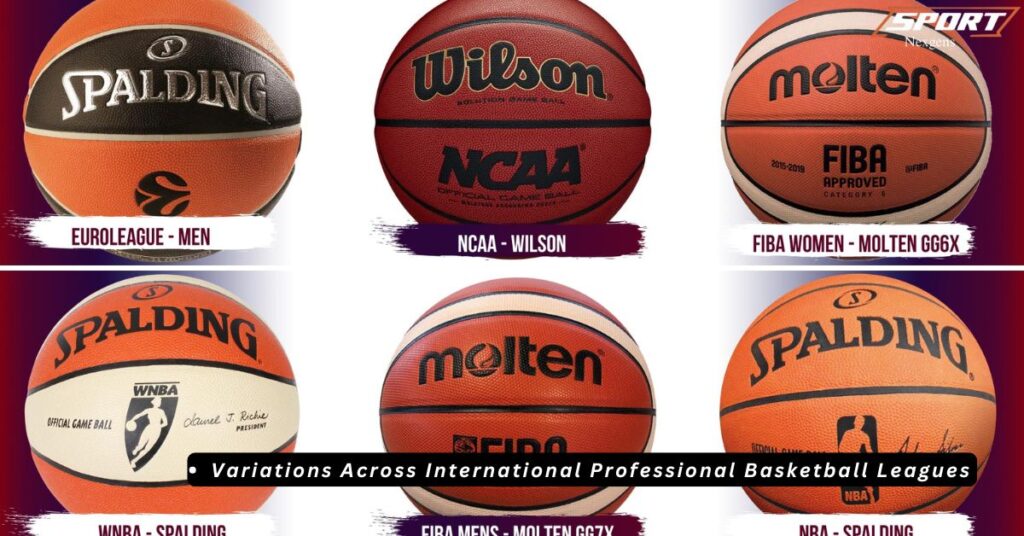
The Chinese Basketball Association (CBA) has recently implemented a novel “rotation rule,” requiring teams to field at least two domestic players at all times during games.
In Europe, the Basketball Champions League is experimenting with a revolutionary “Golden Basket” overtime format. Under this rule, the first team to score seven points in overtime wins, creating intense, rapid-fire finishes that have sparked both excitement and debate among fans and players alike.
Basketball EuroLeague (Europe)
The EuroLeague has recently implemented a revolutionary “power ranking” system that directly influences playoff seeding, adding a new dimension to regular season games. This unique approach rewards consistent performance throughout the season, rather than just final standings.
To combat scheduling challenges, the league has introduced a novel “flex schedule“ for the latter part of the season. This adaptive system allows for marquee matchups to be prioritized based on team performance and fan interest, ensuring the most compelling games are showcased in prime time slots.
Chinese Basketball Association
The Chinese Basketball Association has introduced a novel “import player rotation” rule, allowing teams to swap foreign players mid-season. This dynamic system keeps the league competitive and unpredictable, as teams can adapt their roster to address weaknesses or capitalize on emerging strategies.
To promote player health, the CBA has implemented advanced biometric monitoring during games. Using wearable technology,
Australia’s National Basketball League
Australia’s National Basketball League has pioneered a “Next Stars” program, attracting top global prospects as an alternative pathway to the NBA. This innovative initiative has transformed the NBL into a premier destination for young talent, elevating the league’s profile and competitiveness on the world stage.
The NBL has also introduced a unique “3D Ref” system, utilizing cutting-edge technology to assist with officiating decisions. This advanced system provides referees with real-time 3D reconstructions of plays, ensuring more accurate calls and enhancing the overall integrity of the game.
Why Basketball Game Duration Fluctuates?
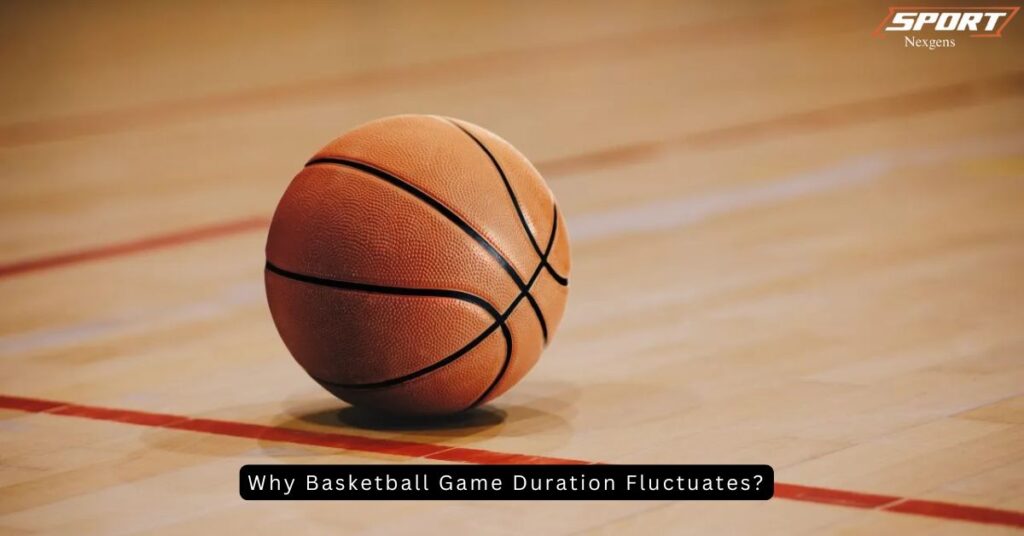
This game duration can vary significantly due to the implementation of advanced time-stopping technologies in professional leagues. These systems, which precisely track play stoppages, have led to more accurate game times but also extended overall durations, sometimes resulting in matches lasting well over two hours.
The introduction of coach’s challenges and expanded video review processes has further contributed to fluctuating game lengths. While these features enhance fairness, they can add unpredictable amounts of time to games, making it challenging for broadcasters and fans to anticipate exact end times.
How Long Are FIBA Basketball Games?
FIBA basketball games are shorter than their NBA counterparts, lasting 40 minutes of actual playing time. This is divided into four 10-minute quarters, with a 15-minute halftime break.
In recent years, FIBA has experimented with game formats in certain tournaments. For instance, the FIBA 3×3 World Cup features 10-minute games or matches that end when a team scores 21 points.
What Was the Longest NBA Game in History?
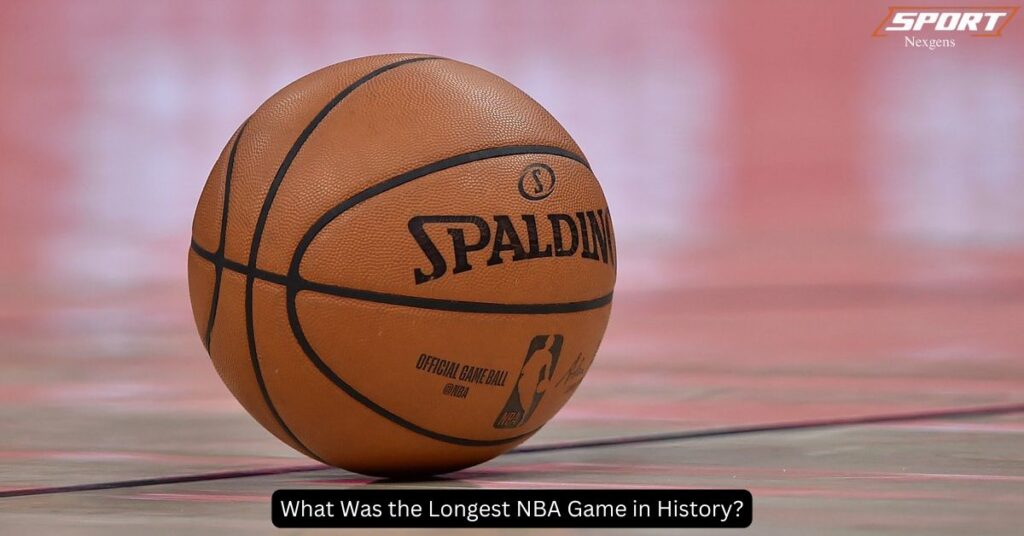
The longest NBA game in history occurred on January 6, 1951, between the Indianapolis Olympians and Rochester Royals. It lasted an incredible six overtimes before the Olympians finally secured a 75-73 victory after 78 minutes of play.
This marathon match not only set a record for duration but also highlights the dramatic evolution of basketball. The low final score, barely surpassing what individual players achieve today, reflects the era’s slower pace and different strategies
Frequently Asked Questions
How long is a full NBA basketball game?
A full NBA basketball game lasts 48 minutes, divided into four 12-minute quarters.
How many hours is 1 basketball game?
An NBA game typically lasts about 2 to 2.5 hours in real time.
How many minutes is a basketball period?
A standard basketball period (quarter) in the NBA is 12 minutes long.
How many minutes is a basketball player?
A professional basketball player’s career typically lasts 10-15 years on average.
Why is NBA 12 minutes?
The NBA uses 12-minute quarters to balance game length, player endurance, and entertainment value for fans.
Conclusion
Basketball game duration varies widely across leagues and levels. In the NBA, games consist of 48 minutes of play time, while FIBA international games last 40 minutes. College games in the US are 40 minutes long, and high school games typically run for 32 minutes.
Despite these set play times, actual game duration is much longer. Timeouts, fouls, and other stoppages extend NBA games to about 2-2.5 hours. Recently, leagues have experimented with format changes to improve pace and viewer experience, such as the NBA’s play-in tournament and FIBA’s 3×3 competitions with shorter, more intense games.

Our celebrity-focused website offers readers an insider’s view into the glamorous world of stars. We deliver breaking news, exclusive interviews, and behind-the-scenes gossip. From red carpet events to personal milestones, we cover it all. Join us for daily updates on your favorite celebrities’ lives, careers, and controversies.
